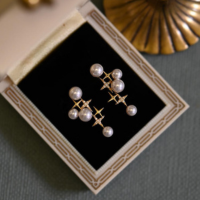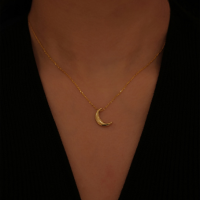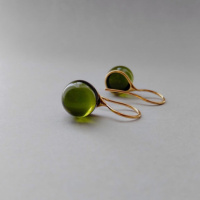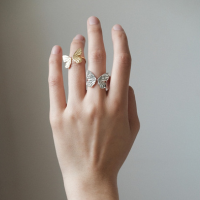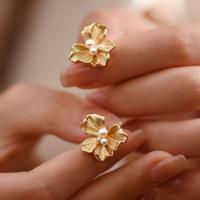
How to Clean Pewter Jewelry
Check out our personalized jewelry collections! (kids drawing jewelry, coin jewelry, wire jewelry, fingerprint jewelry, handwriting jewelry, and more)
Keeping our pewter jewelry looking stunning doesn’t have to be a hassle. With a little care, we can maintain its shine and character, letting each piece stand out. For regular cleaning, gently wash pewter jewelry with mild soap and warm water.
When tarnish appears, it may seem challenging, but it’s not too hard to handle. By using a mix of white vinegar and flour, we can tackle the tarnish while keeping our jewelry safe. After a quick rinse and dry, each piece will look like new again.
For perfectionists seeking that exquisite, polished look, we can use a small amount of non-abrasive polish. Ensuring we take long-term care of our collection by storing it in a dry place helps, too. Consistent upkeep means our pewter jewelry retains its beauty and charm, making it truly timeless.
Key Takeaways
- Wash with soap and warm water.
- Use vinegar and flour for tarnish.
- Store jewelry in a dry place.
Understanding Pewter
Pewter is a popular material for jewelry due to its beautiful, soft shine and durability. Its composition and history trace back centuries, with different types available today.
History and Composition
Pewter has an impressive history dating back to ancient Egypt and Rome. It was prized for its easy moldability and appealing finish. Traditionally, pewter was made from tin and small amounts of lead. Today, modern pewter typically includes tin with copper, antimony, and bismuth. This makes it both lead-free and safe for jewelry. The evolution in its composition has improved its strength and reduced tarnishing, making it an excellent choice for fashion jewelry.
Types of Pewter
There are several types of pewter, each with unique features. Fine pewter is made from 90% tin and is ideal for high-quality jewelry. Britannia metal is another popular type, offering a slightly different luster and is widely used in decorative items. For a more antiqued look, oxidized pewter is preferred, with its darkened patina adding an old-world charm. Each type has specific attributes that can amplify unique jewelry designs, making them versatile for personal styles.
Before You Start
Cleaning pewter jewelry is simple if we're prepared. First, we need to gather the right materials. We also should identify the type of pewter in our jewelry to ensure we use suitable cleaning methods.
Gather Your Materials
Before we begin, collecting everything we need is crucial. Here's a quick list to help us get started:
- Soap: Mild dish soap is gentle yet effective for cleaning.
- Soft Cloth: A lint-free, soft cloth is best for wiping and drying.
- Warm Water: Use lukewarm water to help remove dirt.
- Soft Brush: A soft-bristled toothbrush is useful for detailing.
Working in a well-lit area helps us see the jewelry clearly. Also, make sure to have a towel or soft surface ready to avoid any damage if our jewelry accidentally slips.
Identify Pewter Type
It's important to know the type of pewter we're dealing with. Pewter can be polished, antique, or oxidized. Each requires a different approach:
- Polished Pewter: This is shiny and smooth. We clean it gently to maintain the sheen.
- Antique Pewter: Darker and with a patina that we don’t want to remove.
- Oxidized Pewter: Appears blackened or dark gray and needs special care.
Knowing the type helps us avoid using the wrong cleaning methods and ensure the jewelry shines as it should. Let’s inspect our pieces closely to determine their type before moving forward.
Routine Cleaning
Pewter jewelry benefits from regular care to keep its shine and prevent tarnish. We can use simple techniques to maintain its beauty.
Dusting Off
Keeping our pewter jewelry dust-free is the first step. We should use a soft, lint-free cloth for this task. Microfiber or cotton cloths work best. These won't scratch the surface and are easy to find.
Gently wipe each piece, paying more attention to the design details. Dust can settle in crevices, so be thorough. When we notice more buildup, it might be time for a deeper clean. Regular dusting keeps pewter looking fresh and shiny. Just a few minutes once a week can make a big difference.
Soap and Water Technique
For a more thorough clean, we can use mild soap and water. It's important to choose a gentle soap to avoid damage. Mix a few drops of soap with warm water in a bowl. Avoid using hot water as it might harm the metal.
Dip a soft cloth into the soapy mixture and gently wipe the jewelry. Focus on areas that collect more dirt. Once we're done, rinse with clean water to remove any soap residue. It's crucial to dry the jewelry completely with a soft towel. This minimizes water spots and preserves its natural luster. Repeated heavy cleaning isn't necessary; once a month should suffice.
Tackling Tarnish
Dealing with tarnished pewter jewelry? We've got you covered with easy homemade remedies and advice on using commercial cleaners. Choose what suits you best and bring back that lovely shine.
Homemade Remedies
One of our favorite ways to clean pewter jewelry is using simple items you probably have at home. We can mix a paste using equal parts of vinegar and flour with a little salt. This paste does wonders on tarnished surfaces.
Apply this mixture gently with a soft cloth, then let it sit for about 30 minutes. Be careful not to scrub too hard, as pewter is soft and can scratch easily. After letting it sit, rinse the jewelry with warm water to remove all the paste. Make sure to dry it completely with a soft towel.
Another option is using a paste made of baking soda and water. This also works well on light tarnish. Apply it similarly, and remember to rinse and dry thoroughly. Lemon juice can also be helpful, especially for stubborn tarnish.
Using Commercial Cleaners
We might prefer commercial cleaners for quick and effective results. Many products are specifically made for pewter. When choosing a cleaner, ensure it’s safe for jewelry to avoid damage.
Always follow the instructions on the packaging. Generally, these cleaners are applied with a soft cloth or brush. Gently rub the cleaner on the jewelry to remove tarnish. Make sure to rinse off any residue with water afterward and dry the jewelry.
Commercial products can be more potent, so consider testing the cleaner on a small area before applying it to the whole piece. This helps prevent unwanted reactions or damage.
Polishing to Perfection
Pewter jewelry needs the right polish to shine. It's essential to choose a good polish and apply it correctly to bring out its natural beauty. With careful steps, pewter can glow like new.
Choosing a Polish
When we're picking a polish, it's important to choose the right one for pewter. Mild polishes work best because harsh chemicals can damage the metal. Some polishes come in a paste form, which is easy to apply.
Look for these key ingredients:
- Talc: Gentle and effective for polishing.
- Linseed oil: Adds a nice shine.
- Beeswax: Provides a protective layer.
These ingredients can be found in many commercial pewter polishes. If you prefer homemade options, mixing vinegar, flour, and salt can act as a gentle alternative. Always test a small area first to ensure it doesn't damage the piece.
Applying Polish Correctly
To apply the polish, we need a soft cloth or sponge. We dab a small amount onto the cloth, then gently rub the jewelry in circular motions. This helps avoid scratches and keeps its luster intact.
We must ensure not to apply too much pressure. Firm, gentle strokes will remove tarnish without damaging the pewter. Rinse with water afterward to wash away excess polish. Dry it with a clean towel to prevent water spots.
For intricate designs or crevices, thin cotton swabs are helpful. They reach into tiny spaces, ensuring the entire piece is polished. Regular polishing keeps our jewelry looking vibrant and new.
Long-Term Care
When it comes to keeping pewter jewelry looking its best, proper storage and careful handling are key. Let's explore some ways to ensure our pieces stay beautiful for years.
Storage Tips
Storing pewter jewelry correctly prevents tarnish and scratches. We should keep our jewelry in soft, lined boxes or pouches. Soft materials protect against scratches. It's a good idea to store each piece separately to avoid contact with other metals or jewelry.
Humidity is an enemy of pewter, so choosing a dry spot is important. Adding a small packet of silica gel in our storage boxes can help control moisture. This keeps our pewter jewelry from dulling or discoloring over time.
Handling and Use
When handling our pewter jewelry, we must be gentle to preserve its look. Always avoid contact with harsh chemicals like perfumes, lotions, and cleaning products. These substances can damage the surface and shine of pewter.
Wearing pewter jewelry while swimming or showering should also be avoided. Water, especially chlorinated or saltwater, can harm pewter. After wearing, wipe the jewelry with a soft cloth. This helps remove any oils or residues that could cause tarnish.
By paying attention to how we store and handle our pewter jewelry, we ensure that it remains a treasured part of our collection for a long time.
Professional Care
Sometimes, we need a little extra help to keep our pewter jewelry looking its best. Knowing when to seek professional care and finding the right expert are crucial steps in maintaining our treasured pieces.
When to Seek Professional Help
Pewter jewelry can become dull or damaged over time. If our pieces have stubborn tarnish or intricate designs that are difficult to clean, it might be time to consult a professional. Professionals have the tools and expertise to handle complex issues that we might not be able to fix ourselves, like removing deep scratches or handling delicate settings.
Another situation to consider is if our jewelry has sentimental value or is an heirloom. We don't want to risk damaging it with home cleaning methods. A professional can offer the best care to preserve its history. They can also check for hidden issues, like loose stones or weakened clasps, ensuring everything is secure. By relying on experts, we can extend the life and beauty of our jewelry.
Finding a Trusted Professional
Finding a reputable professional is key. We should look for jewelers with good reviews and a history of handling pewter. Recommendations from friends or family can point us in the right direction. Local jewelry stores often offer cleaning services, and their staff can help us understand what services suit our needs.
It's essential to ask the right questions. We should inquire about their experience with pewter and what methods they use. Understanding their process gives us confidence that our jewelry is in safe hands. Some professionals might use ultrasonics or special polishes. By knowing our options, we can make informed choices to keep our pieces looking exquisite.
Frequently Asked Questions
We explore common questions about cleaning pewter jewelry. From using household items to specific cleaning methods, we provide practical insights to help your jewelry sparkle.
What is the best method to remove tarnish from pewter jewelry?
To remove tarnish, we recommend using warm water mixed with mild dish soap. Gently scrub with a soft cloth or sponge. Rinse well and dry with a towel. This process helps maintain the jewelry's finish and avoids scratching.
Can household items like vinegar and baking soda be used to clean pewter jewelry?
Yes, vinegar and baking soda can be effective. Mix a paste of baking soda and water, apply it with a cloth, and buff gently. Rinse with vinegar to enhance the shine. This method is safe for pewter if done carefully.
Are there natural ways to restore shine to pewter jewelry without causing damage?
Natural methods work well. Lemon juice mixed with salt can polish pewter. Rub gently with a soft cloth, then wash with water. This combination brightens jewelry while protecting against damage.
How can toothpaste be used in the cleaning process of pewter jewelry?
Toothpaste can be an option. Use non-gel, white toothpaste, and apply a small amount to a soft cloth. Gently rub and rinse with warm water. It's important to use toothpaste sparingly to avoid abrasions.
What precautions should be taken when cleaning oxidized pewter ornaments?
For oxidized pieces, avoid harsh chemicals. Gently clean with a soap solution and a delicate cloth. Avoid using abrasive materials that could scratch the surface. Regular cleaning prevents further oxidation.
Is it safe to use Brasso on pewter, and will it make the jewelry shiny again?
Using Brasso is not recommended for pewter, as it can be too abrasive. It might make it shiny initially, but it risks damaging the delicate surface over time. Sticking with gentler cleaning methods is safer for maintaining the jewelry's integrity.

